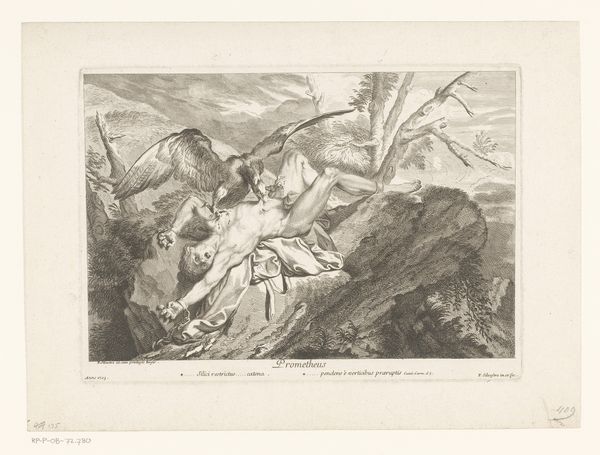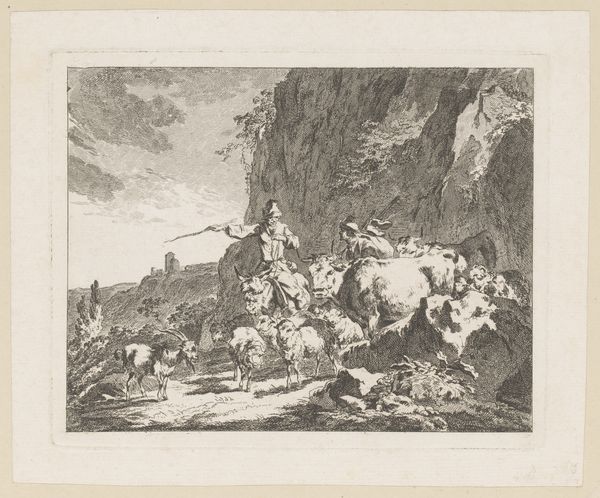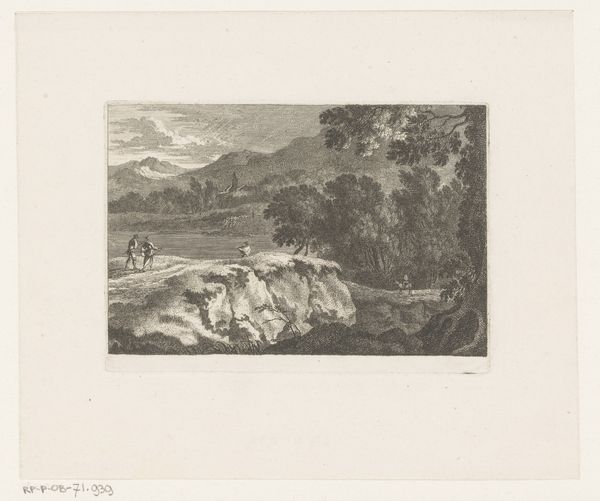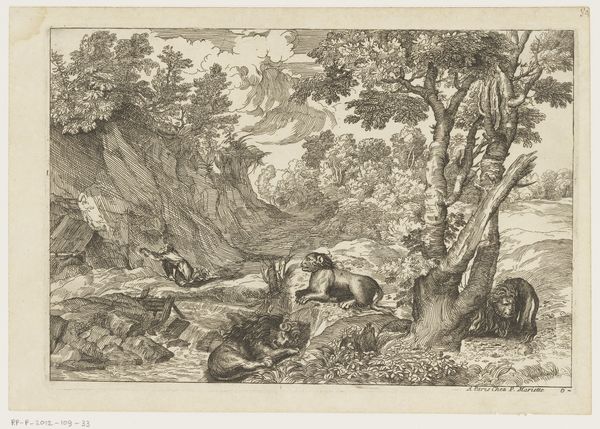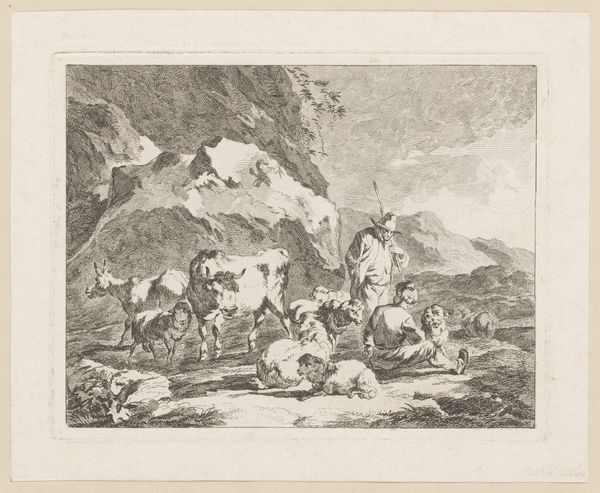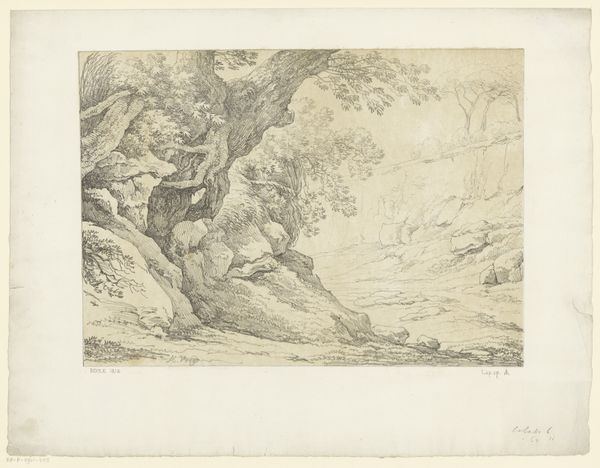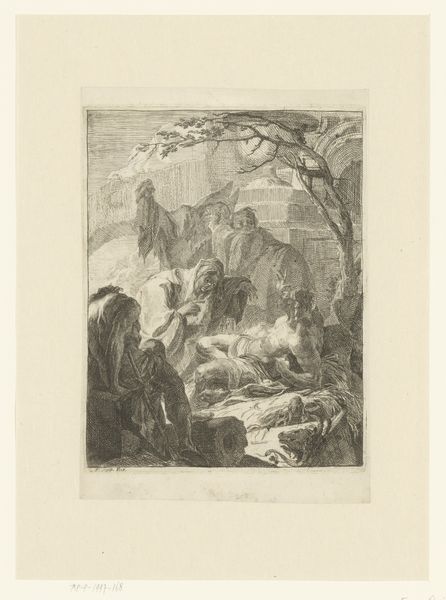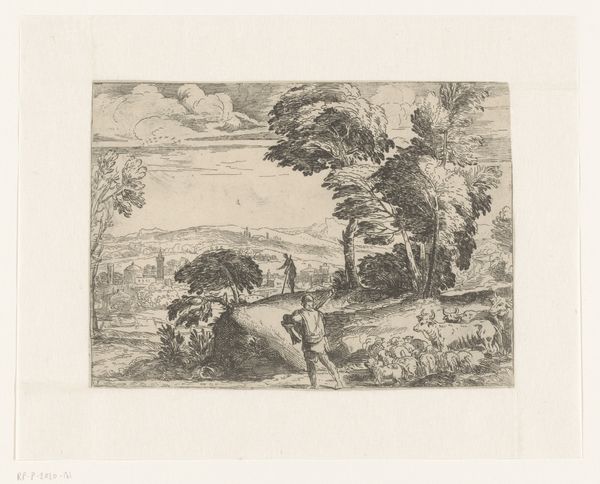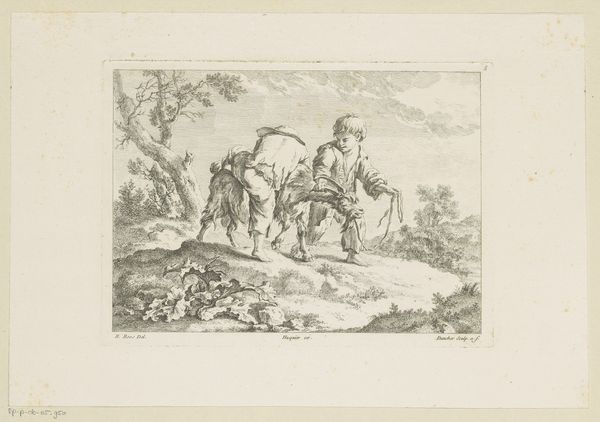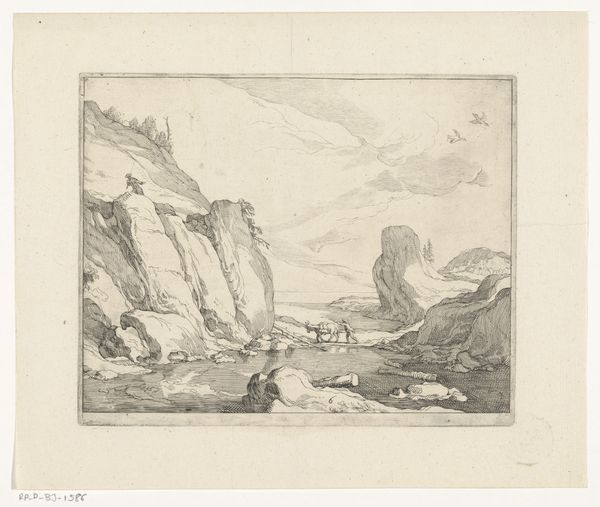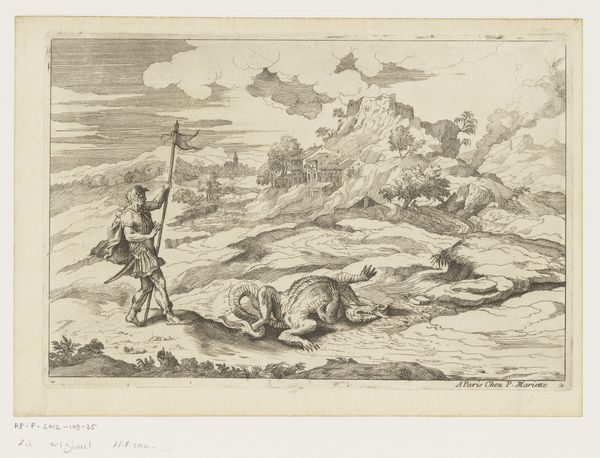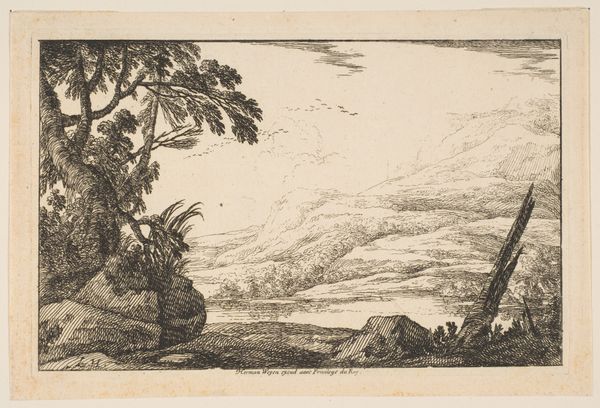
drawing, print, metal, etching
#
drawing
#
baroque
# print
#
metal
#
etching
#
pencil sketch
#
landscape
Dimensions: height 166 mm, width 213 mm
Copyright: Rijks Museum: Open Domain
Curator: Here at the Rijksmuseum, we have before us “Uitzicht met rotsen,” or “View with Rocks,” an etching by Frederick Bloemaert, created sometime after 1635. It’s rendered in metal and print, showcasing a rather striking landscape. What’s your first take? Editor: Stark, wouldn’t you say? The angular shapes create a mood of isolation and, perhaps, resilience. All that stone—it suggests something permanent and unwavering against the forces of nature. Curator: Definitely. Consider Bloemaert’s process here: the labour intensive techniques used for etching on metal. His mark-making yields various textural qualities to make us consider what rockiness meant in 17th century Dutch life. Remember, landscape art gained popularity as a way for a growing merchant class to envision and, in a way, claim the land. Editor: Ah, but consider the symbolic language embedded here. The rocks might stand for strength, but also hardship, the sometimes brutal aspects of nature and life. And that small, precarious figure perched atop one of the highest rocks! Perhaps an allusion to the human spirit's ability to transcend adversity. Curator: Precisely! It speaks to both human agency within nature's design and the increasing consumption of landscape art to make ideological arguments during the rise of capitalism. Notice too how Bloemaert renders the varying rock forms through precise cross-hatching, showcasing the possibilities latent in simple lines to suggest form and volume. Editor: And I see elements reminiscent of vanitas imagery – the fleeting nature of life symbolized, not just in the possible fragility of the human figure, but even in the suggestion that rock, even at its hardest, is ever so slowly worn away by time and weather. It serves as a memento mori. Curator: That's insightful. The print medium allowed Bloemaert to share such concepts more broadly through relatively inexpensive reproductions. Prints like these facilitated the popular consumption of nature as commodity and idea, a view literally framed and available for repeated perusal and reflection within one’s own domestic sphere. Editor: Indeed. And whether it was intended or not, the scene still hums with an elemental power, those jagged forms casting long visual shadows that speak to endurance. Bloemaert certainly managed to imbue inert stone with a distinct psychological weight. Curator: Absolutely. Examining this landscape print gives us not just an appreciation of technique and cultural messaging around the 17th-century Dutch relationship to environment, but a chance to ruminate on enduring metaphors. Editor: A solid point. “Uitzicht met rotsen” stays with you, like a visual echo.
Comments
No comments
Be the first to comment and join the conversation on the ultimate creative platform.

